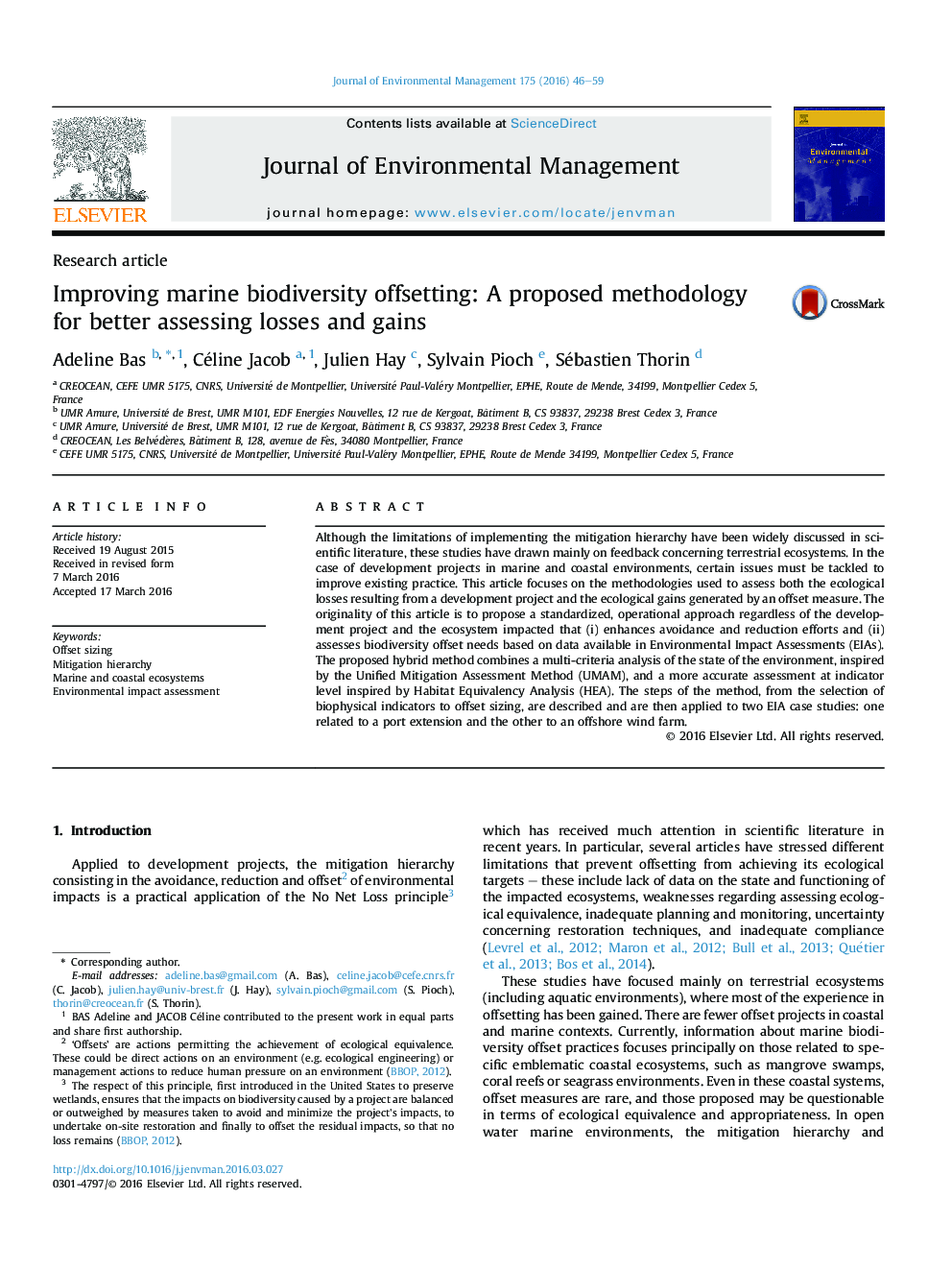| Article ID | Journal | Published Year | Pages | File Type |
|---|---|---|---|---|
| 7480504 | Journal of Environmental Management | 2016 | 14 Pages |
Abstract
Although the limitations of implementing the mitigation hierarchy have been widely discussed in scientific literature, these studies have drawn mainly on feedback concerning terrestrial ecosystems. In the case of development projects in marine and coastal environments, certain issues must be tackled to improve existing practice. This article focuses on the methodologies used to assess both the ecological losses resulting from a development project and the ecological gains generated by an offset measure. The originality of this article is to propose a standardized, operational approach regardless of the development project and the ecosystem impacted that (i) enhances avoidance and reduction efforts and (ii) assesses biodiversity offset needs based on data available in Environmental Impact Assessments (EIAs). The proposed hybrid method combines a multi-criteria analysis of the state of the environment, inspired by the Unified Mitigation Assessment Method (UMAM), and a more accurate assessment at indicator level inspired by Habitat Equivalency Analysis (HEA). The steps of the method, from the selection of biophysical indicators to offset sizing, are described and are then applied to two EIA case studies: one related to a port extension and the other to an offshore wind farm.
Related Topics
Physical Sciences and Engineering
Energy
Renewable Energy, Sustainability and the Environment
Authors
Adeline Bas, Céline Jacob, Julien Hay, Sylvain Pioch, Sébastien Thorin,
